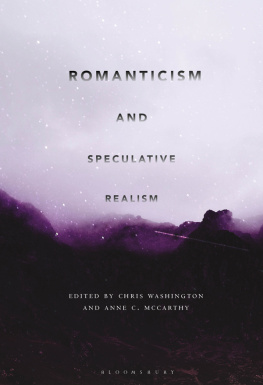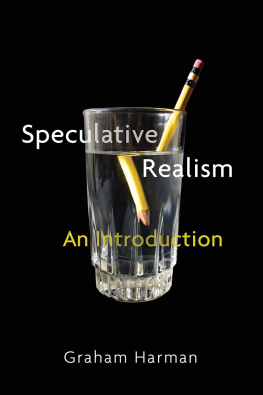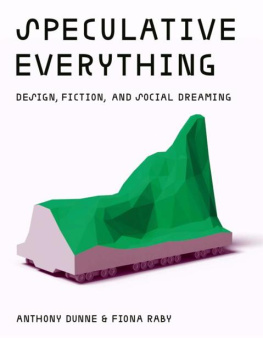SPECULATIVE ART HISTORIES
Analysis at the Limits
Edited by Sjoerd van Tuinen

Edinburgh University Press is one of the leading university presses in the UK.
We publish academic books and journals in our selected subject areas across the humanities and social sciences, combining cutting-edge scholarship with high editorial and production values to produce academic works of lasting importance. For more information visit our website: edinburghuniversitypress.com
editorial matter and organisation Sjoerd van Tuinen and Samuel Saelemakers / Witte de With Center for Contemporary Art, 2017
the chapters their several authors, 2017
Edinburgh University Press Ltd
The Tun Holyrood Road, 12(2f) Jacksons Entry, Edinburgh EH8 8PJ
Typeset in Warnock by Biblichor Ltd, Edinburgh, and printed and bound in Great Britain by
CPI Group (UK) Ltd, Croydon CR0 4YY
A CIP record for this book is available from the British Library
ISBN 978 1 4744 2104 1 (hardback)
ISBN 978 1 4744 2106 5 (webready PDF)
ISBN 978 1 4744 2105 8 (paperback)
ISBN 978 1 4744 2107 2 (epub)
The right of Sjoerd van Tuinen to be identified as the editor of this work has been asserted in accordance with the Copyright, Designs and Patents Act 1988, and the Copyright and Related Rights Regulations 2003 (SI No. 2498).
This book is published in association with Witte de With Center for Contemporary Art, Rotterdam.
Contents
Sjoerd van Tuinen
Armen Avanessian
rik Bordeleau
Francis Halsall
Adi Efal
Vlad Ionescu
Elisabeth von Samsonow
Kerstin Thomas
Lars Spuybroek
Sjoerd van Tuinen
Andrej Radman
Kamini Vellodi
Bertrand Prvost
Sarah Kolb
Bram Ieven
Fleur Courtois-lHeureux
List of Figures
Acknowledgements
This collection of essays is published following the three-day international research symposium Speculative Art Histories. This symposium took place in May 2013 and was organised by Samuel Saelemakers (Witte de With Center for Contemporary Art) and Sjoerd van Tuinen (Centre for Art and Philosophy Erasmus University, Rotterdam) with the help of the Faculty of Philosophy and the Erasmus Trustfund of the Erasmus University, Rotterdam. Thanks to Jelle Baan for proof-reading and indexing, thanks to Marnie Slater for formatting and revising the manuscript and to Carol Macdonald at Edinburgh University Press for her enthusiasm.
Foreword
Speculating wildly
T HERE IS A certain wildness inherent to the word speculation. Although the concept has by now firmly found its place in the language of international contemporary art roughly since 2007, the year the Speculative Realism conference was held at Goldsmiths College its more customary habitat of capitalist economics and globalised finances has since then certainly not failed to put into practice the principles of speculative action nor to illustrate its unruly outcomes. In todays art world, speculation seems to be most often used as a term to validate the love of open-endedness so embedded in many contemporary art practices. Regardless of the question whether indeterminacy is a valid artistic strategy or not, the tolerance of the use of speculation, especially in its manifestation as a verb, seems to be wearing thin by now. And, although in philosophy the adage reigns that an idea one cannot formulate clearly is an idea one hasnt quite understood, speculative writing, tentative formulations and variations of thought are common throughout the entire history of philosophical thinking. By speculating wildly, both art and philosophy seek to break away from pre-given boundaries or definitions. What if...
The increased use of speculation as a term and as a strategy can be considered in parallel to the decline or even complete absence of absolute or finite systems of meaning in both contemporary visual art and philosophy. When speculative realism is described as a proper school of thought, this act of delineation is always immediately countered by the statement it is no such thing. It seems this day and age is too volatile to support any grand philosophical systems or pictorial regime.
Both art history and art philosophy suffer from the same all too easily formulated accusation: either they contain too little art, or they neglect to obey the academic principles of history and philosophy respectively. In this volume, the two domains of inquiry meet and philosophy ventures into the realm of art history. The book stems from a year-long reading group held at Witte de With Center for Contemporary Art and organised together with the Centre for Art and Philosophy of the Erasmus University. The reading group focused on recent writing by philosophers gathered under the umbrella of Speculative Realism, as well as canonical art historical texts which sought to reinvent the way art history could be written. The aim was to investigate the possibilities the so-called speculative turn in continental philosophy holds for art history and art theory. Authors that were studied include John Dewey, Georges Didi-Huberman, Henri Focillon, Michael Fried, Graham Harman, Brian Massumi, Quentin Meillassoux and Reza Negarestani. The reading group lead to a three-day research symposium, the results of which are gathered in this collection of essays.
When we return to the linguistic roots of speculation, we encounter the Latin word specularia, which means both window and to look. I would like to thank all contributing writers for opening so many unexpected windows and perspectives on art and art history. On behalf of Witte de With I also extend my gratitude to Sjoerd van Tuinen, all reading group participants and the Centre for Art and Philosophy Erasmus University for their commitment to the project.
Samuel Saelemakers
Curator Witte de With Center for Contemporary Art
Introduction
Sjoerd van Tuinen
T HIS BOOK EXPLORES some of the implications of and opportunities within the speculative turn in continental philosophy from the perspective of art history. Speculation? Besides its only legitimate domain today, that of finance, is this not a thing of the past, when metaphysicians were used to making unverifiable claims about the nature of God, the World and the Self? From Kant to Wittgenstein, critical philosophy has taught us to remain silent on that of which we cannot speak. Likewise, art history has come a long way in establishing itself as a positive human science independent from its metaphysical beginnings. In both cases, enlightened, self-critical and self-reflective thought has worked hard on closing the door to ontology, on reducing the Ideas of reason to ideology and on limiting the domain of knowledge to phenomenal objects. Speculation, it seems, has not been en vogue for quite some time.
Quentin Meillassoux has recently labelled the anti-speculative status quo as correlationism: the conviction that there can be no access to a reality that is independent of human subjectivity and its mediations through the senses, the unconscious, language, technology or, indeed, art and aesthetics. philosophy is no longer the contradictions to which every attempt to find first principles necessarily falls victim, just as the problem of the humanities is no longer the losing out of facts to theoretical illusion. On the contrary, the facts themselves appear in a new light and with new depth, which involve the future of life and the cosmos. It is time for a new, speculative realism, which treats human beings, science, and social relations as things having no more status than neutrinos or jellyfish. It is time for a bio- or even a geo-art-history. Whereas art history is a fetishist, even the fetishist, historical discipline, Adi Efal in her contribution to this book develops the concept of habitude as a tool through which speculative art history can understand the work of art as produced thing, and therefore as inseparable from its mesh of conditions of production and duration. The same goes for art itself. Paraphrasing from the chapter by Elisabeth von Samsonow: if ours has been the age of archiheresy, a period characterised by the dissimulation of the ontological tie between architecture and the earth, architecture itself should learn to overcome the fetishisation of its objects and become a para-geology.










